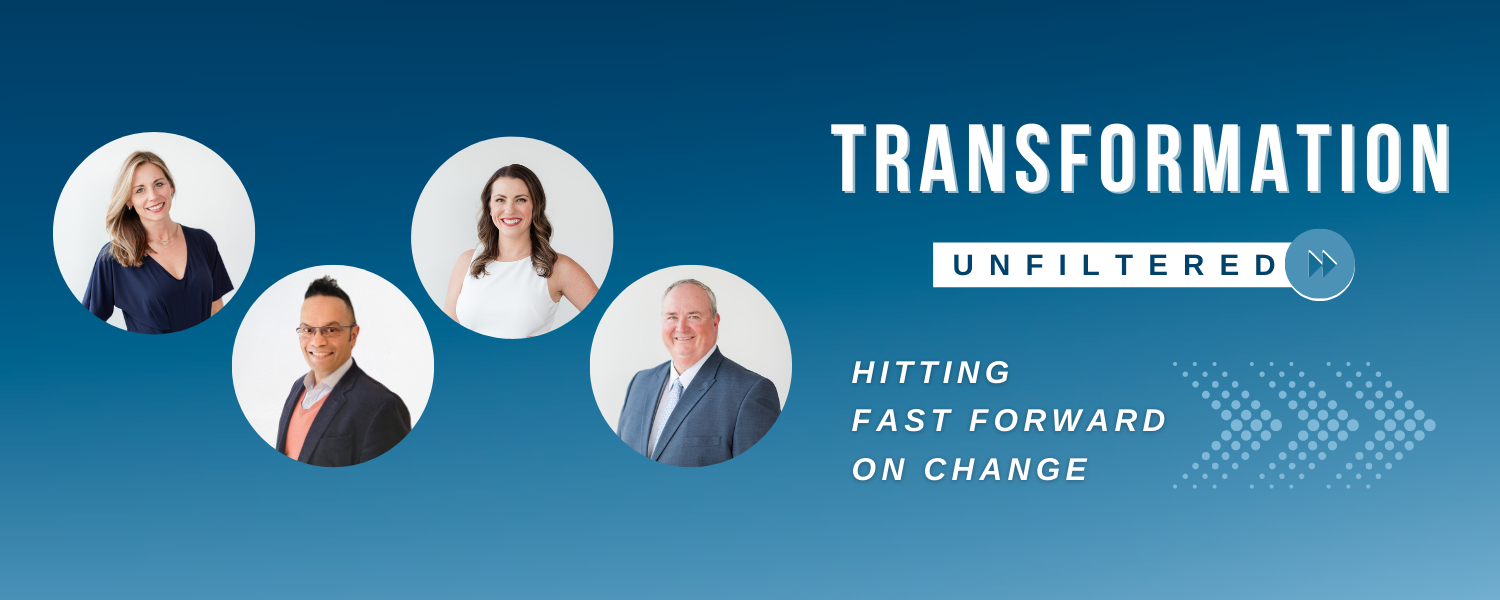Episode 13
Resilient Leadership: How to Sustain Momentum During Change Fatigue
Summary:
Let's be real, change is hard—even when it's good. In this video, we discuss how resilient leaders can keep their teams engaged when energy is low and changes keep coming. We delve into three essential strategies: checking in on people, equipping middle managers, and building in breaks. Discover how to maintain momentum, connect with your team, and make change stick by focusing on human elements rather than just strategic metrics.
Chapters:
00:00 Introduction: The Challenge of Change
00:16 Key Strategies for Resilient Leadership
00:29 Checking in on People, Not Just Progress
01:42 Equipping Managers to Lead Change
02:27 Building in Space, Not Just Speed
03:06 Conclusion: Making Change Stick
Host Kelsey Arico: linkedin.com/in/kelsey-arico-775b772b
Executive Producer Jim Kanichirayil: linkedin.com/in/drjimk
Music Credit: "Lost in Dreams" by Kulakovka
Transcript
Let's be real. Change is hard even when it's good. And the dirty secret is. Everyone's exhausted. Leaders are exhausted too, and especially our middle managers, they're being asked to drive transformation. They had usually zero say in and their teams are tapped out.
So how do resilient leaders keep people engaged when energy is low? And change keeps coming because it will, they don't power through. They don't layer on more noise. They do a few things really well. Three, in fact, one, they check in on people, not just progress. Two, they equip their managers to lead change, not just to deliberate.
le rarely talk about morale. [:Ask, are we still connected to the why? What's the energy level on the ground? What do we need to do about that? Are people still with us, or do you think they're just going through the motions? So here's the science you need to know. When people experience too much change too fast, your prefrontal cortex, that part of the brain that manages things like decision making, empathy and adaptability, literally starts to shut down.
So then what happens? You don't get creativity. You don't get collaboration. You get compliance and things that you've heard of, like quiet, quitting. Number two, great leaders to sustain momentum during times of change. Equip their people, . Middle managers are the heartbeat of the organization, but during change, they're often just treated like messengers, not leaders.
g points, maybe q and a, but [:So if you wanna sustain momentum, start by equipping the people who are carrying it because the people closest to the work, they're also the people closest to your culture and the credibility of the organization. Lastly, and certainly not least in this checklist, is great leaders to sustain momentum.
When change fatigue sets in, they build in breaks. To regain that buy-in, to reset, to reconnect. Change isn't just cognitive, it's emotional. People need space to process the shift, to see themselves in the story, to put themselves in the story, to reconnect with the purpose behind that push. If you want momentum, you need to make it personal.
e huge milestones months and [:So when your team is dragging, when that spark has faded, when change fatigue sets in because it will, there is no shortage of the changes that we're asked that we can't predict that are coming.
Kelsey Arico: They're gonna keep crashing on us like waves every day, and we need to know what to do to support our teams through that. Are you as a leader pushing harder or are you going to create the conditions for people to come back in with energy, with purpose, and a reason to care? Change sticks because it feels worth it because people can see themselves in it and because it meets them where they are and invites them forward, change doesn't stick because it's strategic.
It sticks because it's human.



